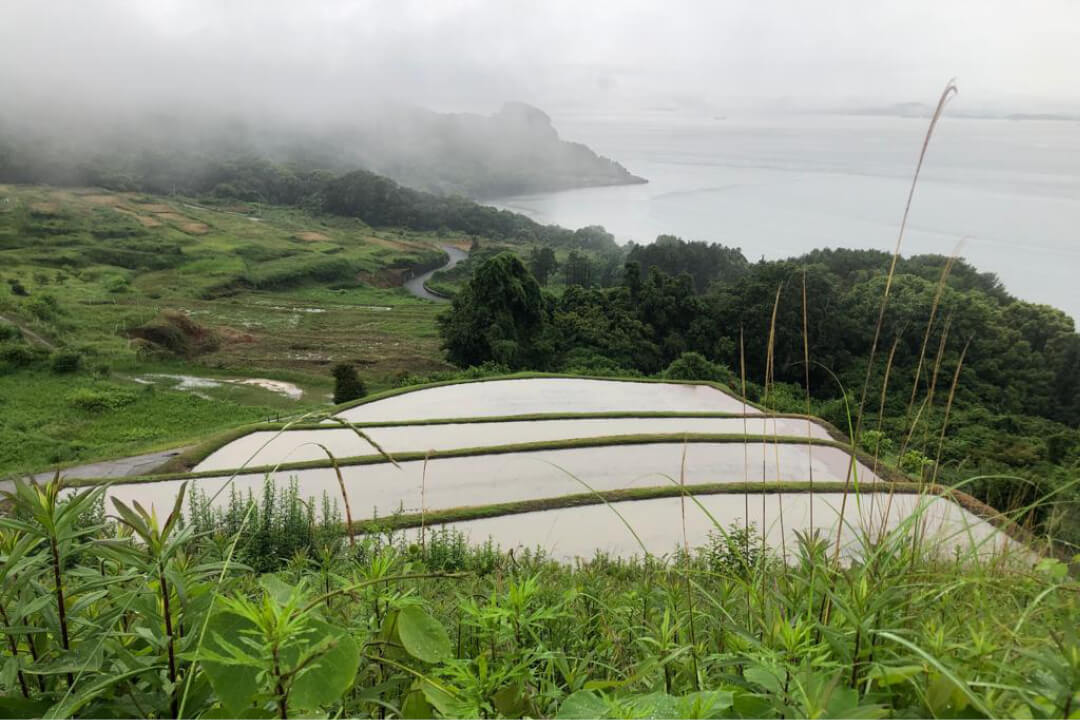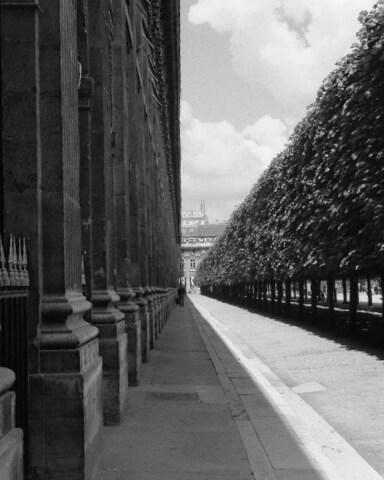What makes this place so special?
While waiting for the ferry to Naoshima, you meet “old acquaintances” that you already know from Venice, New York or Basel: art travelers and artists
Concrete, Monet and the sea
How does a relatively small island in Japan manage to attract art lovers from all over the world, who you would otherwise meet at the Venice Biennale or Art Basel?
It is a mixture of nature, the buildings of the world-famous architect Tadao Ando and modern art.
From our point of view, nature takes the top spot. The Japanese island of Naoshima is located in the Seto Inland Sea, part of the Pacific Ocean. The journey from Tokyo to Okayama by Shinkansen, for example, and then by regional train or car to the ferry, which leaves the Uno port twice an hour and takes around 40 minutes to reach the island, takes 4-5 hours.
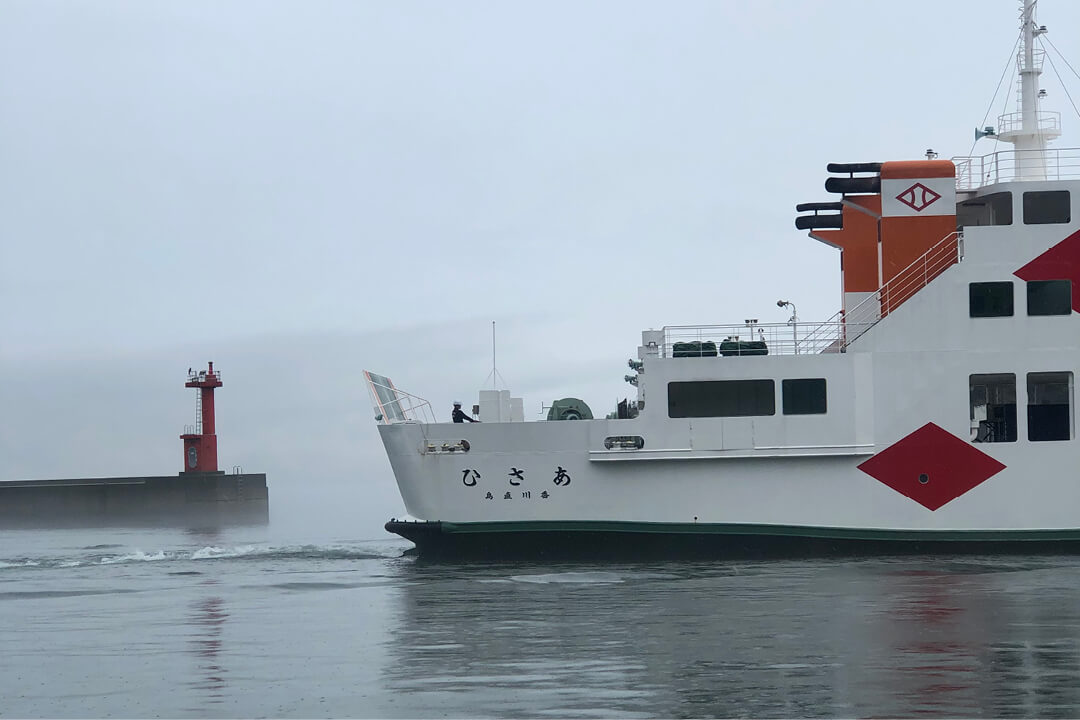
The journey is more complex than a flight to Bilbao. With Naoshima, however, you can definitely speak of a Bilbao effect.
The Bilbao effect
Similar to the Guggenheim Museum, designed by American architect Frank Gehry, which was intended to revitalize Bilbao in 1997 after the decline of the old industries (and succeeded brilliantly), the idea in Japan was to revitalize some islands, some of which were struggling with illegally disposed waste from heavy industry and a rapidly shrinking population, and make them an attractive place.
The owner of Benesse Holding, a group that works in the field of education, training and care for the elderly(turnover in 2022: 5.8 billion Japanese yen), provided the money for the development of Naoshima Island and hired the architect Tadao Ando.
The idea: to use outstanding architecture and contemporary art to create a future for the island and several islands in the surrounding area.
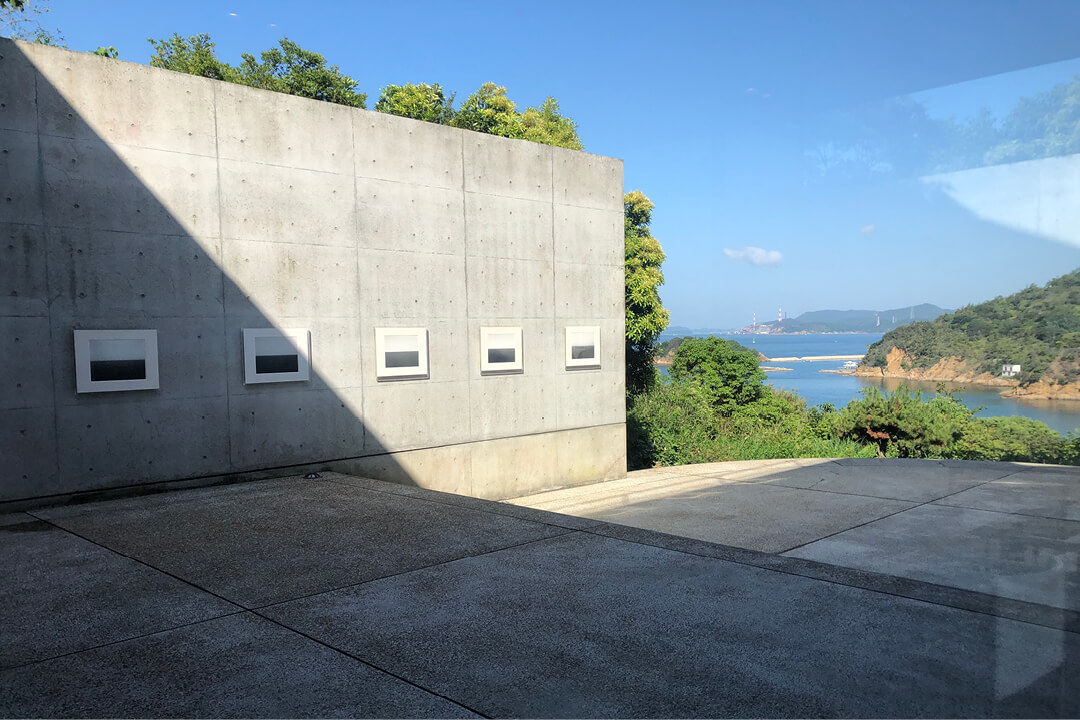
Concrete in tatami mat format
Pritzker Prize-winning Japanese architect Tadao Ando, whose designs include the Langen Foundation’s art house on the site of the former NATO missile station at Hombroich near Neuss and the conference pavilion for the Vitra Campus in Weil am Rhein, works primarily with exposed concrete.
The individual concrete slabs are each the size of a tatami mat, the traditional measure used in Japan to indicate the size of a home.
Naoshima Island is a treasure island for fans of the architect, as three important buildings on the island are pure Tadao Ando: the Chichu Art Museum, the Benesse House Museum and the Lee Ufan Museum.
The art of reduction
Anyone interested in contemporary art is usually familiar with the world’s major museums, all of which own a large number of works and loan further works for exhibitions worldwide. The abundance can be overwhelming.
Naoshima Island is quite different. The museums either focus on one artist, such as the Korean Lee Ufan or the Japanese Hiroshi Sugimoto, or contain only a dozen or so works of art, such as the Chichu Museum. One room of this museum contains seven water lily paintings by Claude Monet.
Two of them are so modern-looking and painted in such extraordinary color compositions that they alone are worth the trip to the island.
Tadao Ando designed the Chichu Museum underground, an idea that has since been imitated many times. The path through the museum is, as Tadao Ando prefers, a quiet, aesthetic preparation for the works on display in the respective rooms.
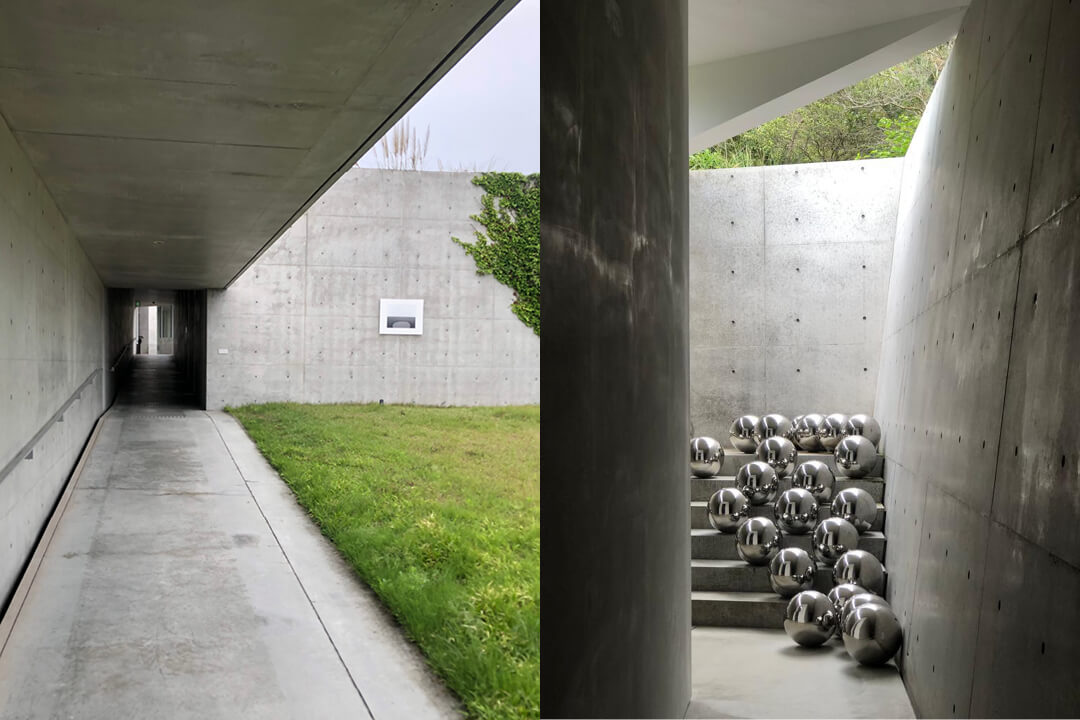
An art experience that leaves a strong impression precisely because of its reduction and staging.
In our view, this is also more successful than the presentation of art in the Benesse House Museum, which presents the usual canon of works by the best contemporary artists: From Gerhard Richter to Robert Long to Zhang Xiaogang – outstanding works, but not as exciting in the mix as concentrating on just a few or one artist.
Nature takes the top spot
It is the island’s nature that brilliantly embeds architecture and art. The mild climate, often referred to in Japan as the “Japanese Riviera”, pampers the lush vegetation and the views of the sea with important shipping routes on the horizon pamper the eye at every turn.
The installations on the outside of the island, such as the Pumpkin sculptures by Japanese artist Yayoi Kusama, magically attract every visitor with a camera. Many other, quieter works are perfectly positioned in the island’s landscape and can often be admired undisturbed.

It’s worth going further
Smaller boats travel to the islands of Teshida and Inujima. There you can experience site-specific art, such as the Yokoo House by artist Tadanori Yokoo.
He was inspired by the work “The Isle of the Dead” by the Basel painter Arnold Böcklin and created a work in an old Japanese house about death and the art of leading a good life, which leads through this house, the garden and a tower in a fascinating way.
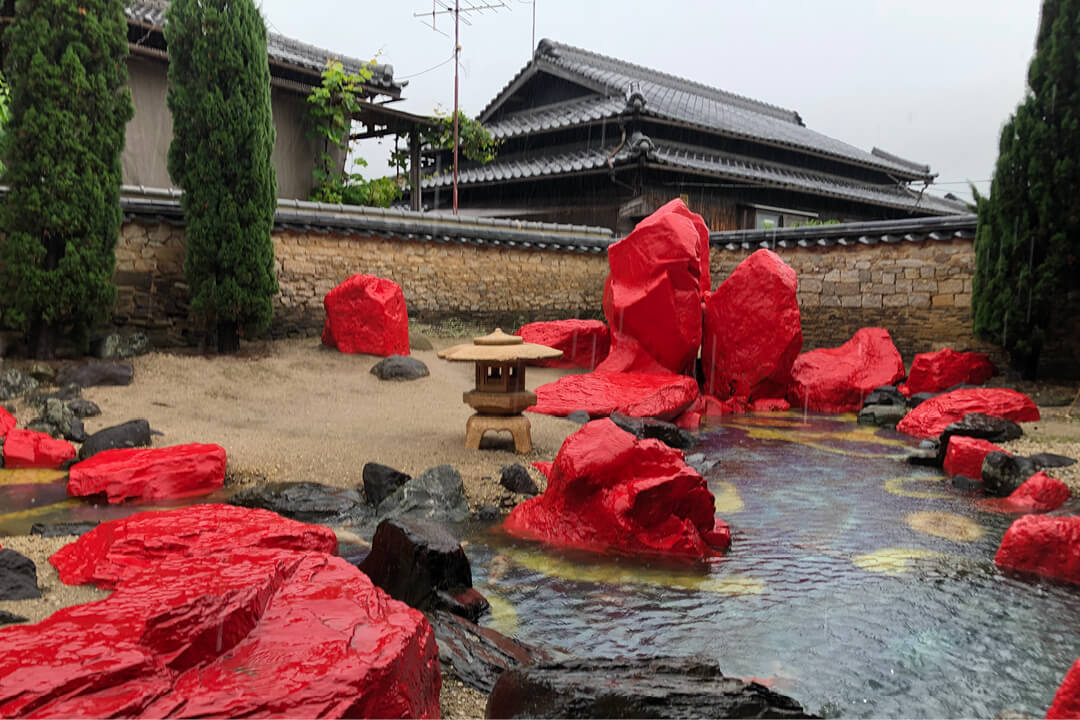
The best-known work on the small island of Teshida is the work of Hiroshima-born artist Rei Naito, which was magnificently realized by architect Raue Nishizawa.
In a concrete ellipse with a wide opening to the ceiling, nature can be experienced in a semi-protected space. Drops of water roll across the floor of the building. A work of art that lets you feel the elements of nature and invites you to reflect.
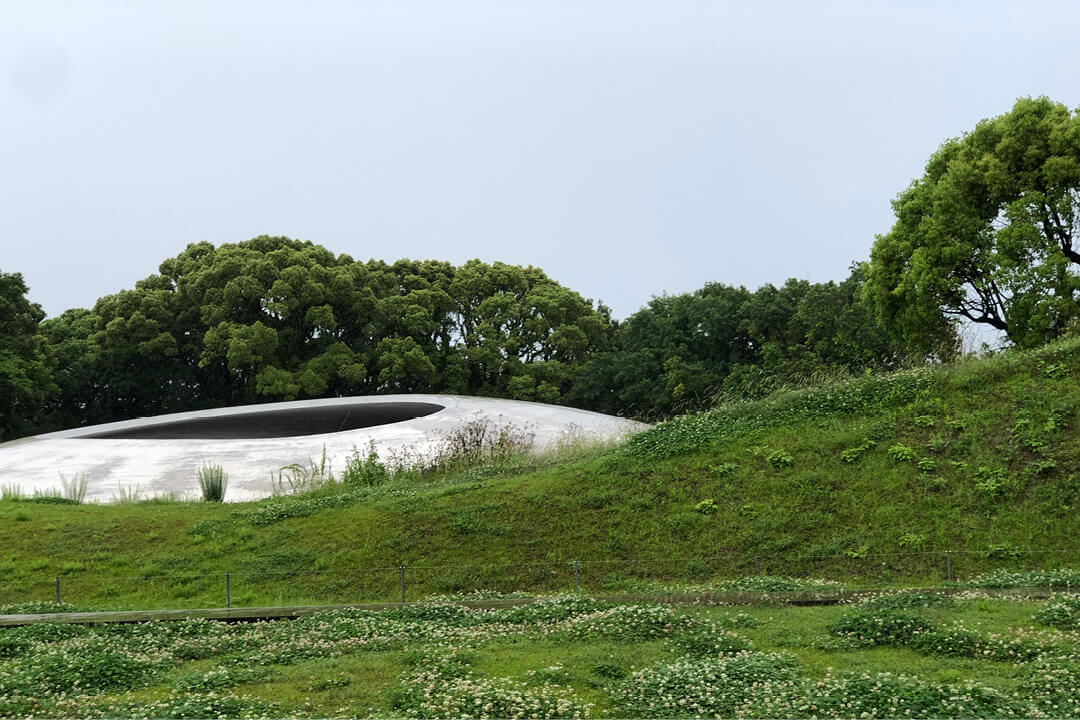
There is much more art to experience on both smaller islands. A stay of three to four days allows you to see most of them and also allows you to take a break to visit the public bathhouse “I Love-Mi” designed by artist Shinro Ohtake.
One example of many where art supports local life. In the public bathhouse, the ferry dock worker enjoys the hot water during his lunch break alongside the art enthusiast who ventures there.
Art must be heavy
As the museums are only open to a relatively small number of visitors at any one time, it is necessary to reserve tickets for the museums online in advance.
The museums are connected by shuttle buses. As most visitors only spend a short time on the art island(s) and it is not easy to find your way around the islands, the hotel staff, who are already geared towards efficiency, shift up a gear.
The escort to the room is like a sprint and check-out takes place at Shinkansen speed. The staff know only too well that it takes finely tuned logistics to fully appreciate the art, architecture and nature in a short space of time
Our conclusion: Compared to many other places of art, Naoshima Island requires more advance planning and needs to be discovered with patience. Is it worth the trip: GloriousMe says: YES!
#Advertising #ProductPlacement #IndependentRecommendation #BecauseWeLoveIt
Photography © GloriousMe 2023

